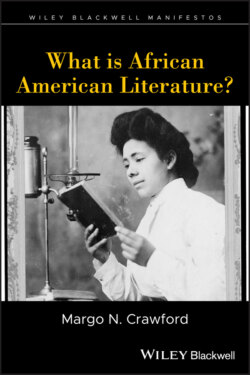Читать книгу What is African American Literature? - Margo N. Crawford - Страница 10
Notes
Оглавление1 1 Philip Gourevitch, ed. The Paris Review Interviews, Vol. 2, (New York: Picador, 2007), 388.
2 2 Alain Locke, “Negro Youth Speaks,” in The New Negro, ed. Alain Locke. (1925; reprint, New York: Touchstone, 1992), 48.
3 3 Fred Moten, Black and Blur (Durham: Duke University Press, 2017), 85. Moten’s words are “acknowledging what it is to own dispossession, which cannot be owned but by which one can be possessed” (85).
4 4 Alain Locke, The New Negro (1925; reprint, New York: Touchstone, 1992), 48.
5 5 Jean Fagan Yellin, Harriet Jacobs: A Life (New York: Basic Civitas Books, 2004), 122.
6 6 Walter Benn Michaels, The Shape of the Signifier: From 1967 to the End of History (Princeton, 2004), 113.
7 7 Gwendolyn Brooks, “Poets Who Are Negroes,” Phylon (1940–1956), Vol. 11, No. 4 (4th Qtr., 1950), 312.
8 8 Ralph Ellison, Invisible Man (New York: Vintage Books, 1995 [1952]), 438.
9 9 Robert Stepto, in Afro‐American Literature: The Reconstruction of Instruction, argues that 1970s survey courses of African American literature use the literature as a springboard for a discussion of the “non‐literary.” He emphasizes “the simple, haunting fact that Afro‐American history and social science are being taught while Afro‐American language, literature, and literacy are not” (9).Dexter Fisher and Robert B. Stepto, ed. Afro‐American Literature: The Reconstruction of Instruction (New York: The Modern Language Association of America, 1979), 9.
10 10 Raymond Williams, The Sociology of Culture (Chicago: University of Chicago, 1981), viii.
11 11 Michael Boyce Gillespie, Film Blackness: American Cinema and the Idea of Black Film (Durham: Duke University, 2016).
12 12 Alexis Pauline Gumbs and Mattilda Bernstein Sycamore, “We Are Always Crossing: Alexis Pauline Gumbs,” Bomb, 22 March 2018.
13 13 Fawz Kabra, “Interview with John Akomfrah” July 5, 2018. Ocula.com
14 14 Amiri Baraka, ‘Technology & Ethos” in Raise Rage Rays Raze: Essays Since 1965 (New York: Random House, 1971)
15 15 Alexis Pauline Gumbs, M Archive: After the End of the World (Durham and London: Duke University Press, 2018), 51.
16 16 Ashon T. Crawley, Blackpentecostal Breath: The Aesthetics of Possibility (New York: Fordham University Press, 2017), 52–53.
17 17 Walker writes, “Cane was for Toomer a double ‘swan song.’ He meant it to memorialize a culture he thought was dying, whose folk spirit he considered beautiful, but he was also saying good‐bye to the “Negro” he felt dying in himself. Cane then is a parting gift, and no less precious because of that. I think Jean Toomer would want us to keep its beauty, but let him go” (65). Alice Walker, In Search of Our Mothers’ Gardens (Orlando: Harcourt Inc., 1983)
18 18 Darby English, How to See a Work of Art in Total Darkness (Cambridge: Massachusetts Institute of Technology Press, 2010)
19 19 “Richard Wright Describes the Birth of Black Boy,” New York Post, 30 November 1944, B6.
20 20 Michael Warner’s theory in Publics and Counterpublics (2005).
21 21 Book cover quote, Middleton A. Harris, The Black Book (New York: Random House, 1974)
22 22 Ibid., preface, unpaginated.
23 23 In Our Terribleness, unpaginated.
24 24 Jacques Derrida, “Signature, Event, Context” in Margins of Philosophy, trans. Alan Bass (Chicago: University of Chicago Press, 1985)
25 25 Andrei Gorea, “Thoughts on Specific Nerve Energies.” Representations of Vision: Trends and Tacit Assumptions in Vision Research, ed. Andrei Gorea (Cambridge: Cambridge University Press, 1991), 219–230.
26 26 Toni Morrison, Beloved (New York: Vintage, 2004), 61.
27 27 Ameer Baraka (Amiri Baraka), “We Are Our Feeling: The Black Aesthetic” (Negro Digest, September 1969), 5.
28 28 Fredric Jameson, The Antinomies of Realism (London & New York: Verso, 2013), 76.
29 29 Jonathan Flatley, “Reading for Mood,” Representations, Vol. 140, No. 1, Fall 2017, pp. 137–158.
